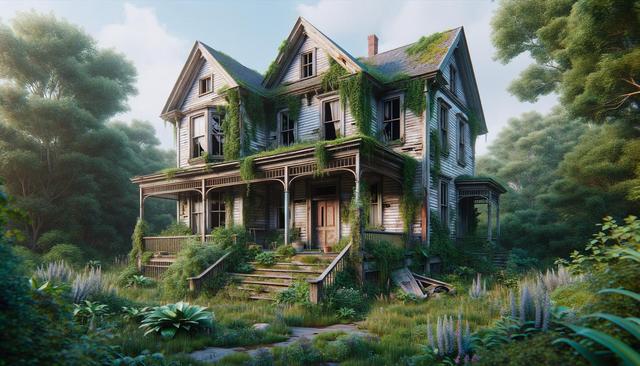The Fate of Abandoned Houses
Abandoned houses often begin their journey as neglected structures left behind due to financial hardship, relocation, or legal complications. Over time, these properties may fall into disrepair, attracting vandalism, pests, and safety concerns. When left unmanaged, they can negatively affect neighborhood property values and become a costly burden for municipalities. However, local governments and nonprofit organizations are increasingly recognizing the potential value hidden within these forgotten homes. Through strategic planning and collaboration, many communities are now taking steps to repurpose them into useful assets.
What happens to abandoned houses depends on a variety of factors, including location, ownership status, and local policies. Some properties are auctioned off to private buyers, while others are taken over by land banks or community development groups. These entities play a key role in identifying viable structures for rehabilitation and determining the most appropriate use for the space. In many cases, the goal is to restore the building’s functionality while addressing community needs.
Restoration and Rehabilitation Efforts
One of the most common approaches to dealing with abandoned houses is through restoration and rehabilitation. This process typically involves extensive repairs, including roof replacements, plumbing updates, insulation improvements, and sometimes structural work. The aim is to create livable spaces that meet modern safety and comfort standards.
Many local governments support these efforts by offering:
- Grants or low-interest loans for home improvement
- Tax incentives for developers willing to invest in neglected properties
- Assistance programs for first-time homebuyers
These initiatives not only improve housing stock but also bring new life to previously declining neighborhoods. In some cases, historical preservation groups step in to restore architecturally significant homes, transforming them into museums, cultural centers, or community gathering spaces that celebrate local heritage.
Affordable Housing and Community Benefits
With rising housing costs in many urban and suburban areas, repurposing abandoned houses into affordable housing units has become a practical solution. Nonprofit housing organizations and community land trusts are frequently involved in such projects, ensuring that the properties remain accessible to low- and moderate-income residents.
The benefits of converting abandoned homes into affordable housing include:
- Reducing homelessness and housing insecurity
- Revitalizing underutilized neighborhoods
- Increasing community engagement and stability
These homes, once seen as liabilities, can become foundational to a community’s growth and resilience. By focusing on long-term affordability, municipalities can ensure that revitalization does not lead to displacement or gentrification, but instead fosters inclusive development.
Creative Uses and Local Landmarks
In some cases, abandoned houses are transformed into more than just living spaces—they become symbols of community identity and creativity. Artists, entrepreneurs, and local organizations have turned derelict homes into:
- Art galleries or studios
- Community gardens and greenhouses
- Pop-up shops or communal kitchens
These creative adaptations not only preserve the structural integrity of the buildings but also inject cultural and economic energy into the area. When thoughtfully designed, these projects can become local landmarks that attract visitors and inspire pride among residents. They serve as reminders that even the most neglected places can have a second life when infused with purpose and vision.
Challenges and Considerations
Despite the promising outcomes, transforming abandoned houses comes with challenges. Legal hurdles such as unclear property titles, tax liens, or absentee owners can delay redevelopment. Structural damage may be too extensive to repair, requiring demolition and new construction. Additionally, funding for large-scale rehabilitation is not always readily available, especially in economically distressed areas.
Communities must also consider how to balance revitalization with preservation. Not every abandoned house can or should be saved, but when decisions are made transparently and with community input, redevelopment efforts are more likely to succeed. Stakeholder collaboration—including residents, municipal leaders, and developers—is crucial for crafting solutions that reflect shared goals.
It’s also important to conduct environmental assessments before any work begins, especially if the property has been vacant for a long time. Issues such as mold, asbestos, or lead paint must be addressed to ensure safety for future occupants.
Conclusion: Reclaiming Spaces, Rebuilding Communities
Abandoned houses may once have symbolized decline, but they now represent opportunity. By transforming these properties into affordable housing, community spaces, or creative landmarks, cities and towns are reclaiming their neighborhoods and fostering inclusive growth. While the path to revitalization can be complex, the long-term benefits—safer streets, improved housing access, and a stronger sense of community—make these efforts worthwhile. For residents, leaders, and developers alike, the key lies in seeing potential where others see neglect, and working together to build a more vibrant future.




Leave a Reply